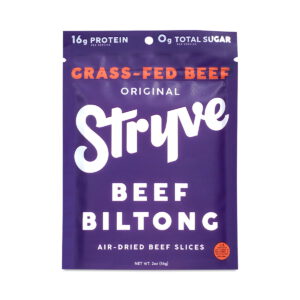- Healthy meal planning strategies
- Quick and nutritious snack ideas
- Mindful eating techniques
- Smart dining-out choices
- Batch cooking essentials
- Time-saving grocery shopping tips
When it comes to grocery shopping, efficiency and mindfulness can transform a hectic chore into a productive activity. Consider making a list before you go. This will not only streamline your shopping experience but will help you focus on purchasing the healthy foods your body craves. A well-planned grocery list should include a mix of fresh fruits, vegetables, whole grains, and lean proteins. Prioritize buying local produce wherever possible; it’s often fresher and supports your community, providing excellent options like seasonal vegetables and locally sourced meats.
For those adhering to a vegan diet, explore plant-based proteins such as lentils, chickpeas, and quinoa. These staples are not only nutritious but also budget-friendly. Additionally, organic versions of fruits and vegetables, particularly those listed on the Environmental Working Group’s Dirty Dozen list, should be prioritized to minimize exposure to pesticides. When shopping online, look for reputable retailers that specialize in organic and sustainable products.
As you shop, pay attention to the ingredients on food labels. A good rule of thumb is to opt for items with fewer ingredients that you can recognize. Avoid heavily processed foods high in sugar and unhealthy fats. Instead, choose whole foods that provide the necessary vitamins and minerals your body needs to thrive, particularly if you lead a busy lifestyle.
Another tip for budget-conscious shoppers is to take advantage of sales and seasonal discounts. Many stores offer loyalty programs that can result in significant savings over time. Planning meals around sales can also contribute to healthier choices and prevent impulse purchases that often derail your healthy eating goals. Consider bulk buying for items like nuts, seeds, and grains, which can save money and provide convenient snack options.
In the age of e-commerce, online grocery shopping offers the convenience of comparing prices and products without the temptations of in-store shopping. Make sure to shop from reputable websites and check reviews to ensure the quality of perishable items. It’s also essential to be mindful of delivery dates; fresh items should arrive on your doorstep in a timely manner to maintain their freshness and safety.
Always remember to carry reusable shopping bags when heading to physical stores, not just for environmental reasons, but also to keep your groceries organized and prevent cross-contamination, especially if you are purchasing items from the meat or dairy sections. With these strategies at hand, grocery shopping can be transformed from a mundane duty into an exercise in healthy eating and sound decision-making.
Quick and nutritious snack ideas
When it comes to finding quick and nutritious snack ideas, busy executives can benefit immensely from having easy-to-prepare options at their fingertips. Maintaining energy and focus throughout the day is crucial, and the right snacks can help bridge the gap between meals, providing essential nutrients and sustaining energy levels.
A balanced snack should ideally combine protein, fiber, and healthy fats to keep hunger at bay and prevent energy crashes. Here are some excellent quick snack options:
- Greek Yogurt with Berries: High in protein and antioxidants, Greek yogurt topped with fresh berries is a refreshing and satisfying snack. This combination assists in muscle repair and boosts overall health.
- Hummus with Veggies: Pairing hummus with carrot sticks, bell peppers, or cucumber slices offers a crunchy, fiber-rich snack that combats cravings while providing essential vitamins.
- Nut Butter on Whole Grain Toast: A slice of whole grain bread spread with almond or peanut butter serves as a wholesome source of healthy fats and fiber. It’s both filling and quick to prepare.
- Overnight Oats: Prepare a jar of overnight oats for a nutritious morning snack that you can grab on your way to work. Use oats, chia seeds, almond milk, and your favorite fruits.
- Trail Mix: A homemade mix of nuts, seeds, and dried fruits is a powerhouse of nutrients and great for a quick energy boost. Control the portion to avoid excessive calorie intake.
To aid with selection, the following table outlines the nutritional benefits of these snacks:
| Snack Option | Protein (g) | Fiber (g) | Healthy Fats (g) | Calories |
|---|---|---|---|---|
| Greek Yogurt with Berries | 10 | 3 | 0.5 | 150 |
| Hummus with Veggies | 4 | 2.5 | 6 | 120 |
| Nut Butter on Whole Grain Toast | 8 | 3 | 8 | 200 |
| Overnight Oats | 5 | 4 | 3 | 210 |
| Trail Mix | 6 | 2.5 | 10 | 250 |
Incorporating snacks into a busy lifestyle does not have to feel overwhelming. By dedicating a small amount of time to snack preparation, such as chopping vegetables or portioning out nuts, executives can ensure they have healthy eating options readily available. Portable containers make it easy to take snacks to the office or on the go, ensuring that hunger is managed effectively while avoiding unhealthy vending machine options.
Choosing snacks wisely not only supports physical health but also enhances productivity and cognitive function throughout the day. Whether it’s a quick bite during a meeting or a mid-afternoon pick-me-up, these nutritious snacks can help busy executives maintain focus and energy levels, making them essential components of a robust and health-focused lifestyle.
Mindful eating techniques

Grocery shopping, whether online or in-store, can be a game-changer for busy executives looking to make healthy eating choices with limited time. To maximize your efficiency, it’s vital to approach grocery shopping with a well-structured plan. Start by crafting a detailed list based on a meal plan for the week. This not only saves time but also helps avoid the temptation of impulse buying. Include a variety of items: fresh produce such as spinach, kale, and avocados; high-quality proteins like chicken or plant-based alternatives; and whole grains like quinoa and brown rice. This balanced approach will support sustained energy levels, crucial for busy executives.
When shopping locally, explore farmers’ markets for seasonal produce. Not only is it fresher, but you also support local agriculture. Engaging with vendors can provide insight into the best selection of fruits and vegetables, allowing you to choose the ripest and most nutritious options. If you’re a vegan, enhance your cart with foods rich in protein like tempeh, beans, and edamame, which offer various health benefits while being budget-friendly. Look for deals on these essentials, especially when purchased in bulk, to save money.
A focus on organic foods can be vital in minimizing exposure to harmful chemicals. Prioritize organic items from the Dirty Dozen list, especially for fruits and vegetables with edible skins. Many online grocery services also provide organic products – just ensure that you are purchasing from trusted retailers to guarantee quality. When selecting packaged items, always scrutinize labels for ingredients. Opt for products with fewer, recognizable ingredients and avoid those laden with refined sugars and unhealthy fats.
One of the significant advantages of online grocery shopping is the ability to easily compare prices and reviews without distractions. Be cautious, however, regarding delivery options, particularly for perishable items. Ensure your orders are scheduled to arrive when someone will be home to unpack them, maintaining freshness and safety. During checkout, use secure payment methods and ensure that the website has valid security certificates to protect your information.
For in-store shopping, bring reusable bags to stay organized. Consider investing in a cooler bag for perishable goods, especially if you shop after work. This can safeguard items while also reducing waste. Additionally, shop during non-peak hours to enhance your shopping experience and minimize stress. Pairing your shopping trips with an exercise routine can be a beneficial way to merge productivity with fitness goals; consider walking or biking to the store if possible.
Evaluate your pantry regularly and take stock of what you have before shopping. This practice reduces food waste and allows for smarter meal planning to incorporate items you might otherwise overlook. Also, don’t shy away from exploring ethnic markets; they often stock unique ingredients that can jazz up your meals and provide new healthy options without breaking the bank. With these strategies, grocery shopping can transform into a streamlined part of your routine, keeping your health in check while accommodating your busy lifestyle.
Smart dining-out choices
When dining out, busy executives can still make mindful food choices that align with their health goals. The key is to be prepared and aware of the menu options available. Start by researching the restaurant ahead of time if possible. Many establishments provide their menu online, allowing you to plan your meal and identify healthier alternatives before you arrive.
When perusing the menu, opt for dishes that highlight grilled, baked, or steamed preparations rather than those that are fried or heavy on creamy sauces. Look for meals rich in vegetables, whole grains, and lean proteins, such as grilled chicken or fish, which offer a bounty of nutrients without excess calories. Salads can be a good choice, but be cautious with dressings—request them on the side to control how much you consume. A simple vinaigrette or olive oil can elevate the flavor without adding excessive sugar or unhealthy fats.
Many restaurants now cater to dietary preferences and restrictions, making it easier for busy executives to find suitable meals. Don’t hesitate to ask the server about modifications; for instance, you can request a larger portion of vegetables instead of carbohydrates or choose a lighter dressing. This flexibility allows you to maintain your healthy eating goals even when dining out.
Another effective strategy is to share dishes. Ordering a variety of appetizers for the table can provide a taste of several options while keeping portion sizes in check. This way, you can savor different flavors while avoiding the pitfalls of a single, oversized main course.
Mindfulness also extends to pace. Eating slowly and taking the time to enjoy your meal can enhance satisfaction and prevent overeating. By focusing on the flavors and textures of your food, you’ll be less likely to consume excess calories and more in tune with your hunger cues.
In social settings or business lunches, be mindful of drinks as they can quickly add calories. Opting for water, unsweetened iced tea, or sparkling water with a lemon wedge can help keep hydration levels high while keeping the calorie count low. If alcohol is on the table, be selective; clear spirits mixed with soda water or dry wine can be smarter choices compared to sugary cocktails or heavy beers.
Lastly, consider the timing of your meals when dining out. Many establishments offer lunch specials that provide a wholesome meal at a reduced price. If possible, choosing to eat out during lunch hours can allow for healthier and more budget-friendly options, giving you more time for business or personal tasks in the afternoons.
“Eating well is a form of self-respect.” – Unknown
By applying these smart dining-out strategies, busy executives can navigate restaurant menus with confidence, ensuring that their choices support their health goals without sacrificing the social aspects of dining. Whether entertaining clients or enjoying a meal with colleagues, keeping these tips in mind can lead to satisfying, nutritious dining experiences.
Batch cooking essentials
 Batch cooking is a game-changer for busy executives who want to maintain a nutritious diet without spending excessive time in the kitchen. This practice not only saves time during the week but also reduces the temptation to choose unhealthy convenience foods when hunger strikes. To get started with batch cooking, select a day that works best for you, ideally one with minimal obligations, such as Sunday. Use this time to prepare meals for the week ahead, allowing you to ensure that you’re fueling your body with healthy, home-cooked options.
Batch cooking is a game-changer for busy executives who want to maintain a nutritious diet without spending excessive time in the kitchen. This practice not only saves time during the week but also reduces the temptation to choose unhealthy convenience foods when hunger strikes. To get started with batch cooking, select a day that works best for you, ideally one with minimal obligations, such as Sunday. Use this time to prepare meals for the week ahead, allowing you to ensure that you’re fueling your body with healthy, home-cooked options.
One of the first steps is to choose recipes that are easy to prepare in large quantities. Dishes like soups, stews, casseroles, and grain bowls are excellent choices. They can be made in bulk and stored for later enjoyment. Consider selecting recipes that use seasonal vegetables and proteins that you enjoy; this will not only enhance flavor but also ensure you look forward to your meals throughout the week.
When cooking in batches, organization is key. Start by chopping vegetables and measuring out ingredients ahead of time. This might seem tedious, but it pays off by making the cooking process more efficient. Utilize kitchen tools like slow cookers, pressure cookers, or large baking sheets to streamline your efforts. By harnessing the power of these appliances, you can prepare multiple dishes simultaneously, maximizing your productivity in the kitchen.
Once your meals are cooked, portion them into individual containers for easy access. Glass or BPA-free plastic containers are ideal for this purpose as they are microwave-safe and can be reused. Label each container with the date and contents, allowing you to easily grab a nutritious meal on busy days. Moreover, try to incorporate a variety of flavors and ingredients in your batch cooking to keep your meals exciting; using different herbs, spices, and condiments can transform simple dishes into something delightful.
Another crucial aspect to consider is storage. Ensure that your fridge is organized and that you’re aware of how long individual dishes can last. For freezing, make sure your meals are cooled down prior to storage. Foods like chili, curries, and cooked grains freeze particularly well and can be easily reheated without losing flavor or texture.
Batch cooking can also be a fantastic opportunity to explore new recipes. Set aside some time to experiment with healthy global cuisines that align with your dietary preferences, whether it’s Mediterranean, Asian, or Latin-inspired. This exploration not only adds variety to your meals but can also be a fun and engaging activity to look forward to at the end of a busy week.
With these batch cooking essentials in place, busy executives can gain control over their eating habits, ensuring they stay nourished and energized without straying from their health goals. As you dive into this practice, remind yourself of the benefits: saving time, reducing stress, and maintaining a commitment to healthy eating.
- What is batch cooking?
- Batch cooking involves preparing large portions of meals ahead of time and storing them for later consumption. This method saves time during the week, allowing you to have nutritious meals readily available without daily cooking.
- How do I get started with batch cooking?
- Start by selecting a day to cook when you have time, typically on weekends. Choose a few simple, healthy recipes, prepare all your ingredients in advance, and allocate time to cook multiple dishes in one go.
- What types of meals can I batch cook?
- Soups, stews, casseroles, grain bowls, and baked dishes are excellent for batch cooking. Look for recipes that keep well and maintain their flavors even after reheating.
- How should I store my batch-cooked meals?
- Store meals in airtight containers. For the fridge, consume them within a few days; for longer storage, freeze portions and label them clearly with dates and contents.
- Can I batch cook different cuisines?
- Absolutely! Batch cooking is a great opportunity to experiment with diverse cuisines. Explore Mediterranean, Asian, or Mexican dishes by adjusting ingredients and spices to your taste.
- How can I keep meals varied in batch cooking?
- Incorporate a variety of proteins, grains, and vegetables in your dishes. Use different herbs, spices, and sauces to enhance flavors and keep meals interesting throughout the week.
- Does batch cooking save money?
- Yes, batch cooking can save money by minimizing food waste and allowing you to buy ingredients in bulk. By planning your meals, you can take advantage of sales and reduce impulse purchases.
Time-saving grocery shopping tips
Grocery shopping effectively can make a significant difference in promoting healthy eating, especially for busy executives who juggle numerous responsibilities. To make your trips to the grocery store more efficient and focused on nutritious choices, consider the following practical tips that blend convenience with wellness.
Start by creating a detailed shopping list based on your meal planning. This serves as a roadmap for what you need and helps eliminate impulse buys that can lead to unhealthy eating. Organize your list by grocery categories—produce, proteins, grains, and snacks—so you can navigate the store efficiently. This organization not only saves time but also ensures you don’t forget essential ingredients.
When it comes to fresh produce, prioritize seasonal fruits and vegetables. Shopping at local farmers’ markets can yield better quality and fresher options at competitive prices. In addition to supporting local farmers, selecting in-season produce often tastes better and is more nutritious. For instance, during summer, stock up on tomatoes, cucumbers, and berries, while fall and winter bring root vegetables and hearty greens that can be used in various meals.
If you’re following a vegan diet, incorporate plant-based proteins like lentils, black beans, and chickpeas into your grocery cart. These foods are not only affordable but also versatile, allowing you to create a variety of meals. Additionally, explore the frozen section for organic fruits and vegetables which can be just as nutritious as their fresh counterparts and last longer in your freezer.
Budget-conscious shoppers should be on the lookout for deals and discounts. Many supermarkets offer loyalty programs that can lead to significant savings. Furthermore, buying items such as grains, nuts, and seeds in bulk can reduce costs over time. Look for shelf-stable items that can be stored for long periods, ensuring you have nutritious options on hand for spontaneous cooking.
As you navigate the aisles, pay close attention to ingredient labels. Select products with fewer, recognizable ingredients, steering clear of added sugars and trans fats. It’s essential to focus on organic foods where possible, especially for products known to contain high levels of pesticides. The Environmental Working Group’s “Dirty Dozen” list is a helpful resource for determining which items are best purchased organic.
In the realm of online grocery shopping, ensure you choose reputable websites that offer clear return policies and quality guarantees. Before placing your order, take time to read customer reviews, especially for perishable items, to ensure freshness. Look for retailers that have a good track record with customer service to facilitate a smooth shopping experience.
Be cautious with delivery dates; try to arrange for your groceries to arrive when someone is available to unpack them. Perishables left unattended for too long can spoil, undermining the very goal of promoting healthy eating habits.
Finally, when shopping in-store, bring reusable bags to maintain organization and reduce waste. They can also help separate perishable items from dry goods, minimizing the risk of food spoilage. If you have a busy schedule, consider shopping during off-peak hours to avoid crowds and enhance your shopping experience.
By implementing these time-saving grocery shopping tips, busy executives can effortlessly align their shopping habits with a commitment to healthy eating, ensuring they have access to nutritious foods even amidst their packed schedules.
New Customers Offer!
Free Gift for the new customer
$24 Value, When You Subscrib Visit Thrive Market












